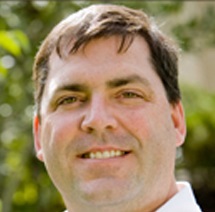9: Changes in Chromosome Number and Structure
- Page ID
- 4122
Previous chapters described chromosomes as simple linear DNA molecules on which genes are located. For example, your largest chromosome, chromosome 1, has about 3536 genes. To ensure that each of your cells possesses these genes the chromosome has features that allow it to be passed on during cell division. Origins of replication found along its length provide places for DNA replication to start, telomeres protect each end of the chromosome, and a single centromere near the middle provides a place for microtubules to attach and move the chromosome during mitosis and meiosis. This chapter examines: (1) changes in the number of whole chromosomes and how they affect the phenotype of an organism and (2) changes in the structure of individual chromosomes and how they affect meiotic pairing. Human examples will be used to show the phenotypic consequences and methods for detection.
- 9.1: Changes in Chromosome Number
- If something goes wrong during cell division, an entire chromosome may be lost and the cell will lack all of these genes. The causes behind these chromosome abnormalites and the consequences they have for the cell and the organism is the subject of this section.
- 9.2: Changes in Chromosome Structure
- If the chromosome is altered, but still retains the three critical features of a chromosome (centromeres, telomeres, and origin of replication), it will continue to be inherited during subsequent cell divisions, however the daughter cell may not retain all the genes. For example, if a segment of the chromosome has been lost, the cell may be missing some genes. The causes of chromosome structural abnormalites, which involves breaks in the DNA that makes up the chromosome.
- 9.3: Chromosome Abnormalities in Humans
- To better understand the consequences let's consider those that affect people. As you will recall humans are 2n=46. The convention when describing a person's karyotype (chromosome composition) is to list the total number of chromosomes, then the sex chromosomes, and then anything out of the ordinary. Most of us are 46,XX or 46,XY. What follows are some examples of chromosome number and chromosome structure abnormalities.
- 9.4: Diagnosing Human Chromosome Abnormalities
- How can we confirm that a person has a specific chromosomal abnormality? The first method was simply to obtain a sample of their cells, stain the chromosomes with Giemsa dye, and examine the results with a light microscope. Each chromosome can be recognized by its length, the location of its centromere, and the characteristic pattern of purple bands produced by the Giemsa.


